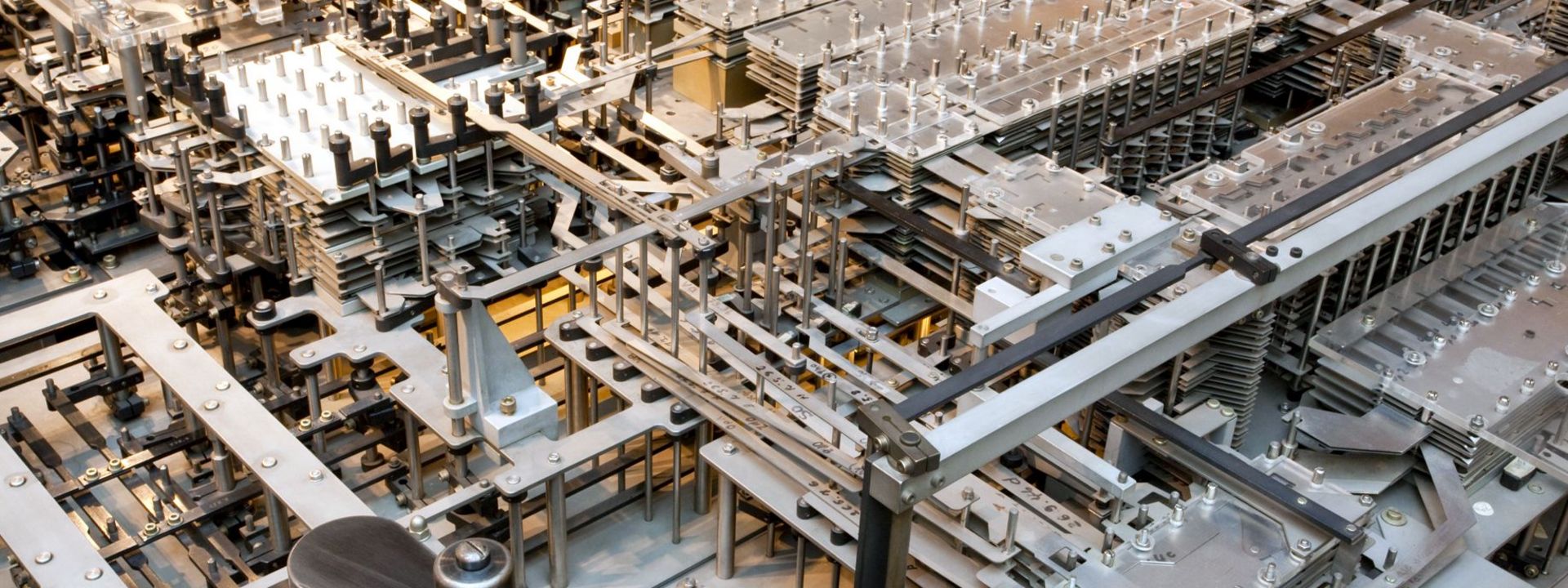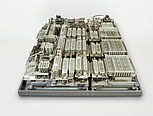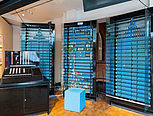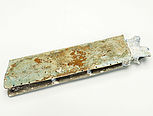The First Computer
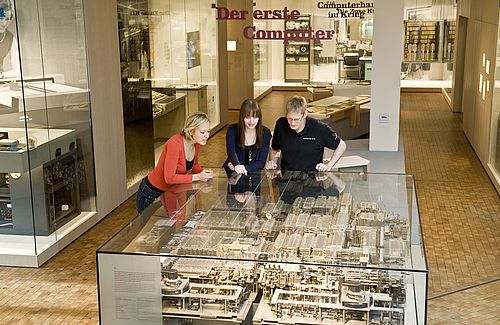
SDTB / N. Michalke
The main focus of the exhibition is the first computer, the Z1. In 1935, at the age of 25, Berlin engineer Konrad Zuse began working on a fully automated computing machine that could do all tedious and complex math problems on its own. To realize his vision, Zuse took over his parents’ living room for several years, rounded up a group of friends to help him with the work, and quit his job. Konrad Zuse was a computer nerd long before there were either computers or nerds.
Konrad Zuse finished his Z1 in 1938. The computer was freely programmable. It worked by controlling mechanical switching elements that pushed metal pins into two different positions: position “0” and position “1.” This binary principle is still the basis of every computer. The Z1 was destroyed during World War II. Konrad Zuse therefore built a model of his pioneering computer for the Deutsches Technikmuseum in 1989. Today, visitors to the museum can view this fascinating monument in the history of technology, tracing the path that led from Zuse’s mechanical binary switching elements to the modern world of computing.
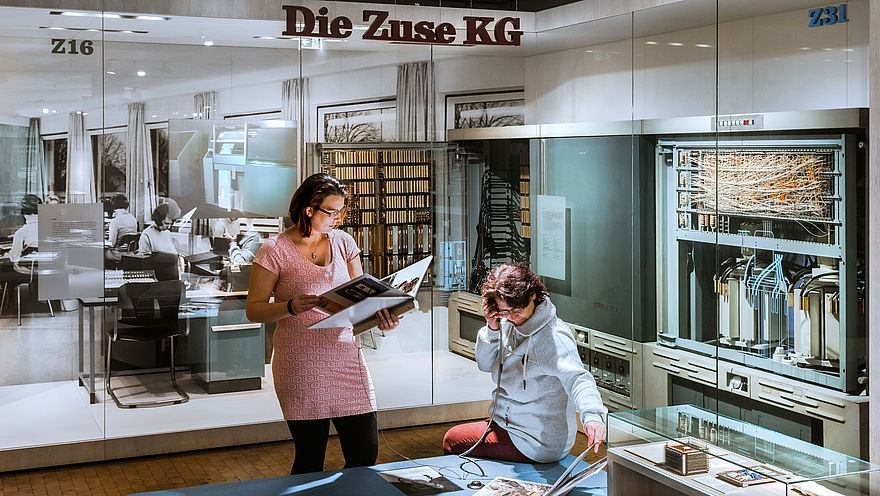
SDTB / H. Hattendorf
Building a Computer in Wartime
Konrad Zuse was in no way satisfied with his first attempt at building a computer. The Z1 worked like modern computers in many respects, but its mechanical switching elements often got jammed. Zuse therefore replaced them with electromagnetic relays, and in 1941 he presented his first fully functioning model, the Z3. The Z3 was also destroyed in an air raid, but a recent replica is on display in the exhibition.
Zuse’s machines were not mere victims of war damage. Indeed, they actively contributed to the damage of the Second World War. For the Henschel aircraft factory in Berlin, Zuse built special computing machines, the S1 and S2, that calculated the proper aerodynamic construction of wings for glide bombs. A piece of an exploded glide bomb is on display in the exhibition, thus putting Zuse’s work in the context of World War II and Nazism.
Inventor and Entrepreneur
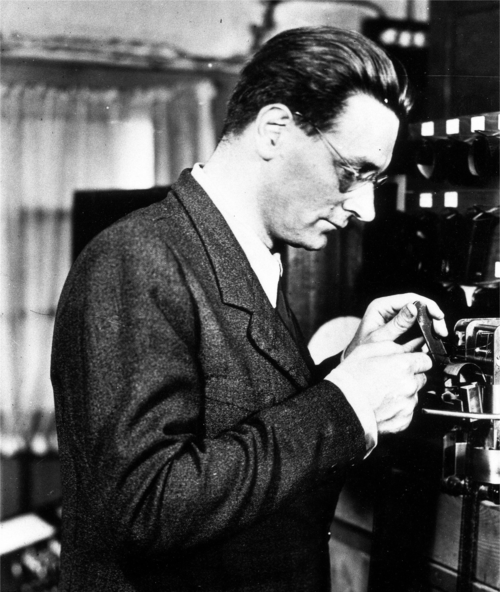
Horst Zuse
Konrad Zuse founded the world’s first computer company – Zuse-Apparatebau (Zuse Apparatus Construction) – in Berlin in 1941. In 1949 the newly formed Zuse KG, located in Hesse, began developing mainframe computers for academic, administrative, and business use. At audio stations, you can listen to former workers at Zuse KG talk about what it was like to work there. In addition, historic film footage shows a mainframe computer in action that is now on display in the Technikmuseum. The exhibition focuses not only on the history of Zuse KG, but also on the history of technology and business in Germany more generally. Konrad Zuse’s inventions and ideas have left their imprint on computing and on our lives. Zuse even developed the first chess program. Visitors to the Deutsches Technikmuseum can play against it.
Highlights

Z1
From 1936 to 1938, civil engineer Konrad Zuse built the first mechanical and freely programmable computing machine – the first computer. The Z1 worked on the principle of binary numbers. It had input and output devices, an arithmetic unit, memory, and a program reader. Unfortunately, the Z1 was destroyed in World War II. Konrad Zuse therefore built a replica of his pioneering computer for the Deutsches Technikmuseum in 1989.
Konrad Zuse, 1989, replica (original: 1938)

Z3
The Z3 was an improvement on the Z1. It was the first fully functional, fully automated, program-controlled, and fully programmable computer. Like modern computers, the Z3 contained an arithmetic unit, a control unit, memory, and input and output devices. Zuse presented the original Z3 to scientists in May 1941. The Deutsches Technikmuseum now contains a replica that Zuse’s son, Prof. Horst Zuse, built.
Horst Zuse, 2010, replica (original: 1941), on loan from Horst Zuse

Graphomat Z64
The Z64 is an automated plotter controlled by punch cards. Konrad Zuse presented it at the 1961 Hannover Fair. The plotter is precise to 1/20 of a millimeter. It was controlled by two planetary gears that translated the digital signals on the punch tape into movements along the x- and y-axes. The device could plot points, arbitrary curves, and symbols in four colors. The Z64 had many applications, including for geodesy, meteorology, and road construction.
Zuse KG, 1961, gift of the Technische Universität Berlin

Piece (aileron) of an exploded Henschel Hs 293 glide bomb
The Hs 293 was built in utmost secrecy during the Second World War by Henschel-Werke GmbH. The proper construction of the wings was calculated with the help of special computing machines developed by Konrad Zuse. The German Wehrmacht used the new precision weapon primarily to destroy ships. Glide bombs of this type were deployed in the Mediterranean in 1942.
Henschel-Werke GmbH, 1942

